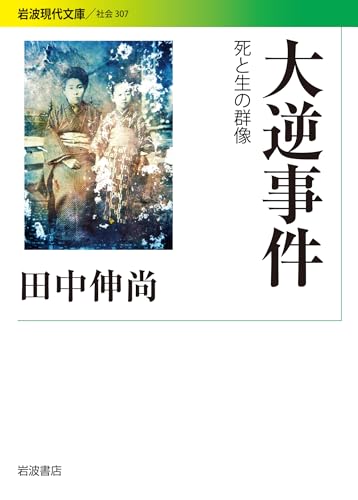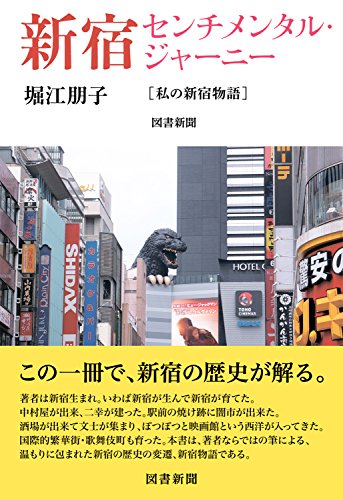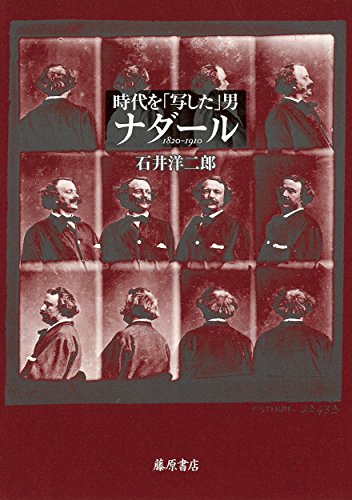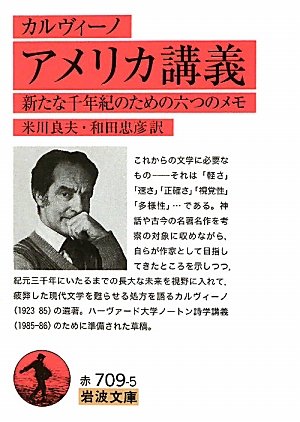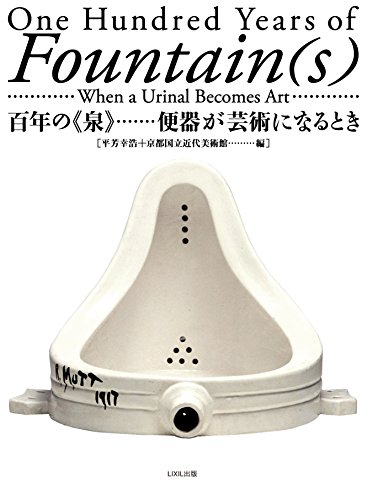1 0 0 0 大逆事件 : 死と生の群像
1 0 0 0 新宿センチメンタル・ジャーニー : 私の新宿物語
1 0 0 0 時代を「写した」男ナダール : 1820-1910
1 0 0 0 OA 低炭素化時代の日本の選択 : 環境経済政策と企業経営
1 0 0 0 アメリカ講義 : 新たな千年紀のための六つのメモ
- 著者
- カルヴィーノ [著] 米川良夫 和田忠彦訳
- 出版者
- 岩波書店
- 巻号頁・発行日
- 2011
- 著者
- 平芳幸浩 京都国立近代美術館編
- 出版者
- LIXIL出版
- 巻号頁・発行日
- 2018
- 出版者
- 日経BP社
- 雑誌
- 日経エレクトロニクス (ISSN:03851680)
- 巻号頁・発行日
- no.1156, pp.40-43, 2015-06
第2部:事例編ディープラーニング技術を活用するのはGoogle社やMicrosoft社といった米国企業ばかりではない。日本の企業の中にも、いち早く商用化する企業が出始めた。小売り店舗などでの人の流れの画像認識に応用したABEJA、ニュース閲覧アプリでのトピック分類に応…
- 著者
- 屈 達才 前田 泰生 郷原 匡史 中塚 硬三 北村 憲二
- 出版者
- 日本昆虫学会
- 雑誌
- 昆蟲.ニューシリーズ (ISSN:13438794)
- 巻号頁・発行日
- vol.5, no.4, pp.121-141, 2002
- 参考文献数
- 42
- 被引用文献数
- 1
Three species of astigmatid mites which infest mason bees, i.e., Chaetodactylus hirashimai, C. nipponicus and Tortonia sp., are known to occur in Japan. Two of them, C. nipponicus and T. sp. are sympatrically distributed in central and northern Japan. They are cleptoparasites of Osmia cornifrons, which is utilized as a pollinator of apples. The invasion/infestation patterns of these mites were studied through a survey conducted at 24 apple orchards in various localities during winter between 1999 and 2001. A population of O. cornifrons was reared in Sendai City, northern Japan, in spring of 1999 so as to analyse the synchronization between invasion/infestation of mites and nesting activity of host bees. As overwintering stages of C. nipponicus, phoretic and cyst-like deutonymphs were found together in the same cells, while 5 stages (larvae, protonymphs, tritonymphs, adults and phoretic deutonymph) were confirmed to hibernate in Tortonia sp. The cyst-like deutonymphs were absent in the latter species. In C. nipponicus, the percentage of phoretic deutonymphs was extremely high (up to 99.6% per host cell), while in T. sp. was lower (6.6% in total). The life type of these 2 mite species is regarded as phoretic- and dweller-like, respectively. The difference of their life types between 2 mite species are enable the partitive use of the pollen-mass stored in the same nests. The following features, regarding to the invasion/infestation patterns, were recognized. 1) Mostly, the first nests made in tubes were infested by both species of mites. The number of cells infested by C. nipponicus extended up to 9 cells, but usually the inner ones were apt to be infested. On the other hand, infested cells were found throughout nest tubes in T. sp.; 2) Distribution and numbers of dead cell contents in a nest by infestation of mites differed between 2 mite species. Only 1-3 cell contents were killed in C. nipponicus, and none killed in T. sp.; 3) Prior to feed on the stored pollen-mass, both species of mites killed hosts. However, they were able to kill hosts of which stages were from egg to early third instar larva. To kill host eggs, it was needed more than 50 adult mites. Those hosts that escaped from slaughter survived and formed normal cocoons; 4) Coinhabiting with C. nipponicus and T. sp. in the same host cell was less frequently occurred (7.1% in total). In these cells, the individual ratio of C. nipponicus was always higher than that of T. sp. The 5 overwintering stages, except phoretic deutonymph, in Tortonia sp. were not all in diapause. These stages began to develop into the next stages sooner, when new food was given under warm temperature. The phoretic deutonymphs of both mite species activated their development by clinging to host bee bodies in both mite species. The cyst-like deutonymphs of C. nipponicus developed into the tritonymphs when subjected them to the scent of host bees.
1 0 0 0 OA 音読と第二言語習得
- 著者
- 弥永 啓子
- 出版者
- 京都橘大学研究紀要編集委員会
- 雑誌
- 京都橘大学研究紀要 = Memoirs of Kyoto Tachibana University (ISSN:18830307)
- 巻号頁・発行日
- no.40, pp.127-144, 2014-02-28
1 0 0 0 IR ビジネス・ローヤーの倫理 : 報酬・クライアント情報の利用・クライアントの利益と公益
- 著者
- 仮屋 広郷
- 出版者
- 一橋大学
- 雑誌
- 一橋法学 (ISSN:13470388)
- 巻号頁・発行日
- vol.6, no.3, pp.1217-1250, 2007-11
- 著者
- 高梨 祐明 豊島 真吾 小野 浩司 田村 博明 太田 智彦 金光 幹雄
- 出版者
- 北日本病害虫研究会
- 雑誌
- 北日本病害虫研究会報 (ISSN:0368623X)
- 巻号頁・発行日
- vol.2009, no.60, pp.274-276, 2009
ナミハダニは落葉果樹の樹上と下草を季節的に異動することが知られている。樹冠下にナミハダニの増殖に好適な草種が繁茂している環境では、除草によって生息場所を失ったナミハダニの移動分散を助長し、樹上密度を上昇させたり、殺ダニ活性のある除草剤を使用することにより、樹上のナミハダニ密度を低減できるという報告もある。ナミハダニは現在、広範囲な薬剤に対する感受性低下が問題となっており、効果が不十分な殺ダニ剤の残効期間を少しでも長く保つため、再増殖の原因となる移入を遮断することが重要である。そのため、主な移入源となる株元雑草をハダニとともに除去できる技術があれば、殺ダニ剤散布の削減に繋がり、IPMの推進に貢献するものと期待される。そこで、雑草とハダニを同時に防除する方法として、株元雑草のバーナー処理を行い、その後のナミハダニ樹上密度に及ぼす影響を評価した。なお本研究は(独)農研機構交付金プロジェクト研究「東北地域における農薬50%削減リンゴ栽培技術体系の確立」の一環として遂行されたものである。
1 0 0 0 IR 「瀟湘臥遊図巻」から趙孟頫へ
- 著者
- 宮崎 法子
- 出版者
- 実践女子大学
- 雑誌
- 実践女子大学美學美術史學 = Jissen Women's University Aesthetics and Art History (ISSN:09122044)
- 巻号頁・発行日
- vol.28, pp.1-15, 2014-03-01
1 0 0 0 OA 官報
- 著者
- 大蔵省印刷局 [編]
- 出版者
- 日本マイクロ写真
- 巻号頁・発行日
- vol.1894年03月12日, 1894-03-12
1 0 0 0 OA 官報
- 著者
- 大蔵省印刷局 [編]
- 出版者
- 日本マイクロ写真
- 巻号頁・発行日
- vol.1895年04月09日, 1895-04-09
1 0 0 0 OA 官報
- 著者
- 大蔵省印刷局 [編]
- 出版者
- 日本マイクロ写真
- 巻号頁・発行日
- vol.1908年06月05日, 1908-06-05
1 0 0 0 OA 官報
- 著者
- 大蔵省印刷局 [編]
- 出版者
- 日本マイクロ写真
- 巻号頁・発行日
- vol.1918年07月25日, 1918-07-25
1 0 0 0 OA 官報
- 著者
- 大蔵省印刷局 [編]
- 出版者
- 日本マイクロ写真
- 巻号頁・発行日
- vol.1904年11月17日, 1904-11-17
1 0 0 0 りんごの葉分析に関する研究(第2報)
- 著者
- 渋川 潤一 相馬 盛雄 泉谷 文足 宇野 登喜
- 出版者
- 一般社団法人 園芸学会
- 雑誌
- 園芸學會雜誌 (ISSN:00137626)
- 巻号頁・発行日
- vol.27, no.2, pp.81-88_1, 1958
Studies on the nutrient deficiencies of N, P, K, Ca and Mg in one-year old apple trees (varieties: Jonathan, Ralls and Indo) and in apple seedlings (seedlings of Jonathan and Indo) were carried out using sand culture method in 1954.<br> Nutrient deficiency symptoms and the contents of nutrient elements in the leaves showing symptoms were summarized as follows.<br> 1. Deficiency symptoms Nitrogen deficiency: Lack of nitrogen in the cultural solution resulted in the smaller leaves and the slower terminal growth of the apple trees very quickly. Leaves showed pale yellowish green color, but were neither scorched nor burned. Reddish coloring started on the older leaves and proceeded toward the younger ones, and finally terminal leaves turned to reddish brown.<br> Phosphorus deficiency: Phosphorus deficiency expressed itself in abnormally smaller size of the eaves and slenderness of the new growth. Foliage color was dark green, and later in the season it turned to bronze with purple or brown spottings, or to dull dark purple.<br> Potassium deficiency: Deficiency symptom of potassium appeared on the basal leaves of the current growth at first, and proceeded upwards as the time advanced. Terminal leaves, however, remain-ed normal. Slight marginal chlorosis of grayish yellow green color was followed by marginal scorching. The scorched area of grayish brown color extended into the body of the leaf in some cases.<br> Calcium deficiency: Visible symptom of direct calcium deficiency was not so easily distinguishable as in the cases of other elements. Margin of basal leaves was discolored and burned, its color changing to medium or dark brown.<br> Magnesium deficiency: Symptom appeared on the basal leaves of the current growth at first, and proceeded to younger ones. Prominent feature was yellowing of leaf margin and interveinal portions. Then those portions showed necrosis, and turned to brown. Many of the dead tissues were colapsed finally, as their size grew larger. Basal leaves were defoliated prematurely.<br> 2. The nutrient contents in the leaves which showed the visible deficiency symptoms were as follows:<br> Nitrogen 1.5_??_2.0%, Phosphorus 0.09_??_0.13%, Potassium 0.6_??_1.0%, Calcium 0.6%, Magnesium 0.20_??_0.29%, respectively.
- 著者
- 松原 実穂子
- 出版者
- エネルギー・資源学会
- 雑誌
- エネルギー・資源 = Energy and resources (ISSN:02850494)
- 巻号頁・発行日
- vol.38, no.2, pp.79-84, 2017-03
